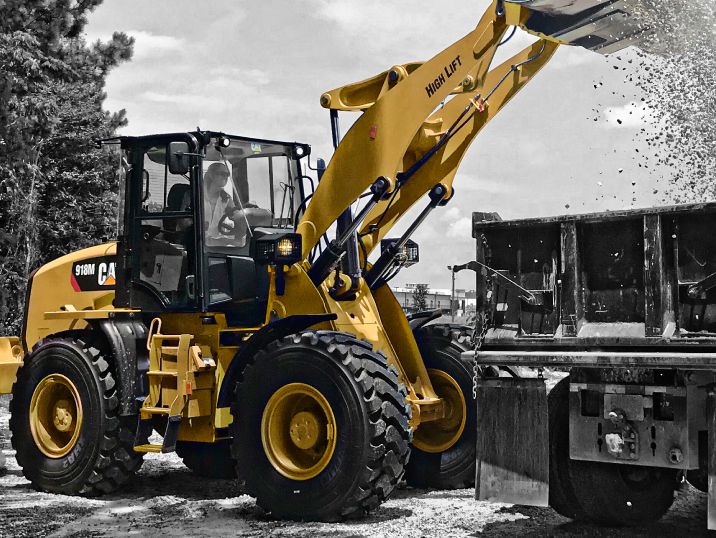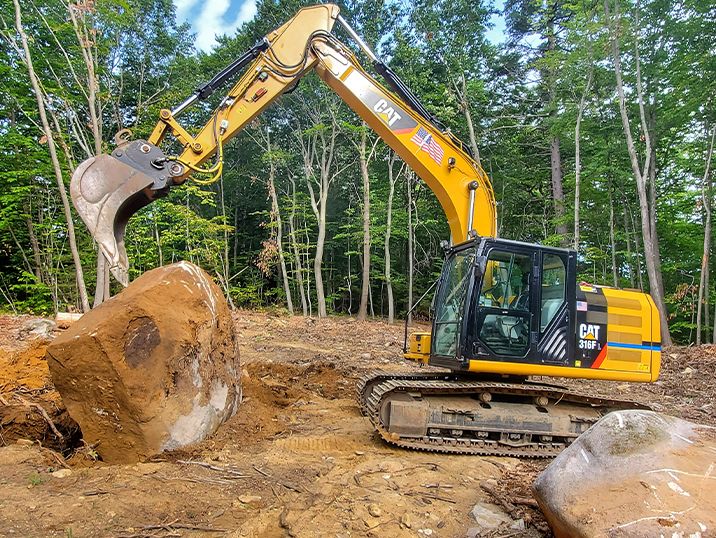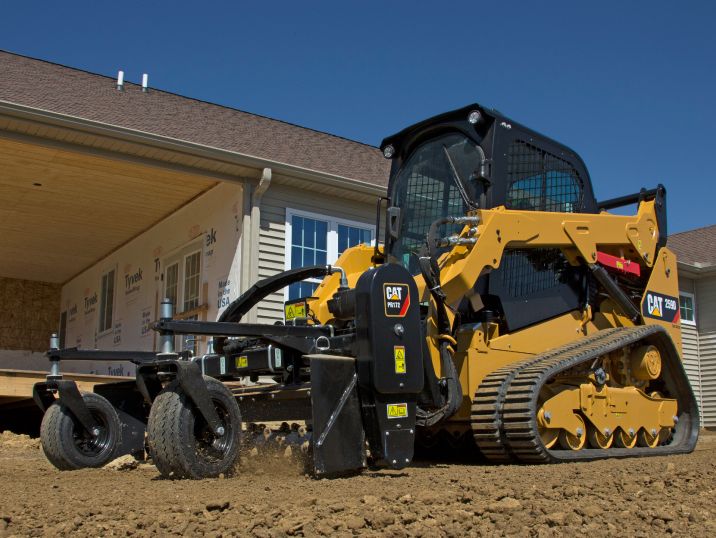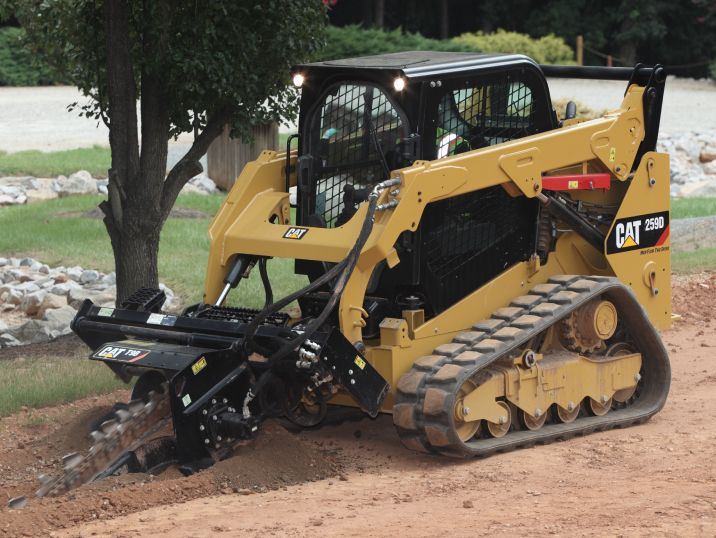

Sign In
Welcome! Sign In to personalize your Cat.com experience
If you already have an existing account with another Cat App, you can use the same account to sign in here
Register Now
One Account. All of Cat.
Your Caterpillar account is the single account you use to log in to select services and applications we offer. Shop for parts and machines online, manage your fleet, go mobile, and more.
Account Information
Site Settings
Security
Maintenance Tips
To Help You Get the Most Out of Your Attachments
Dani Watson | Construction Marketing Consultant
With the right attachments, a single machine can carry out tasks that would normally require an entire fleet. That’s why many construction and landscaping businesses alike are investing in attachments to increase their workload capacities. Preventive maintenance is paramount to getting the most out of your attachments.
Hydromechanical attachment care is particularly important, as these tools are powered by auxiliary flow from the machine. Below, we have outlined maintenance tips for the top five most commonly-used hydromechanical attachments to keep them operating at maximum performance levels.
- Power Box Rakes
- Daily maintenance routine: Always check for any loose hardware and tighten, if necessary. Visually inspect tires and rims. With tires elevated off the ground, move the wheels side-to-side to make sure that the bearing or axle they ride on is not showing excessive wear.
- Weekly maintenance routine: Tire pressure should be checked weekly. It’s important to maintain 60 psi of tire pressure. If pressure is very low, the tire can detach from the rim. Lubricate the pivot plate and bolt, caster mount brackets and roller bearings weekly or after every 10 hours of service. Lubricant levels should be at the same level as the lubricant level hole; add fluid gear grease through the filler plug hole, if necessary.
- Angle Brooms
- Operational tips to prevent maintenance issues: Angle brooms are used in a wide variety of applications, including parking lot, airport runway, street and milling clean-up, to name a few. To help ensure a long service life, there are several operational tips to keep in mind. Continuous use of the broom angled in one direction, excessive bristle engagement and/or applying too much down pressure without proper adjustment of the broom can cause premature wear of the bristles. Therefore, the broom should be adjusted to a position in which the bristles are just slightly engaging with the pavement during operation.
- Daily maintenance routine: Inspect the broom bristles daily; look for uneven wear, premature breaking or bristle loss. Visually inspect the broom for damage—making sure the fasteners are tight, pivot points are not worn and the chain is properly adjusted. Refer to your angle broom operation and maintenance manual (OMM) for chain adjustment instructions. Apply lubricant to the outer bearing and inner bearing on the bristle side.
- Bristle replacement tip: Angle broom bristles should be replaced when the outer diameter has worn down to 560 mm (22 inches) and the exposed bristle length has reduced to 125 mm (5 inches).
- Cold Planers
- Daily maintenance routine: Always check to make sure the conical bits are rotating and turning properly before operation of the cold planer. Grinding dust from asphalt and concrete can work its way into the conical bits during operation and cause them to stop rotating. Therefore, these bits should also be inspected hourly to make sure they are rotating properly while in service. Use caution because bits become very hot during operation, and always use a pair of thick gloves or pliers to check rotation. If the attachment continues to run while the bits are not rotating, damage can occur to the bit holders and the drum itself.
- Weekly maintenance routine: Lubricate the planer depth control cylinder ends and the control shafts. Inspect the drum frame and adjustable skid shoes for wear, and replace them as needed.
- Hammers
- Daily maintenance routine: Hammers require lubrication every two hours during normal operation, and each hour in extreme use. General purpose grease will melt in high temperatures, so it is important to use a lubricant that can withstand hotter conditions, such as hammer paste. Check the OMM for proper attachment positioning while greasing, as improper application can cause severe damage. When greasing, apply ten to 15 pumps for each grease zerk. It is also important to check for loose fittings and hydraulic hose leaks before use.
- Weekly maintenance routine: Every 40 to 50 hours of service, inspect the hammer’s pins and bushings for wear and/or damage. Never operate the attachment for longer than 15 seconds, as continual hammering will heat up the end of the tool pin (moil) and cause premature wear.
- Augers
- Daily maintenance routine: Inspect teeth for wear and damage, and replace as needed. Check to make sure bits are in place and all bolts are tight. Additionally, be sure to inspect the auger for cracks and lubricate the pivot pin on top of the drive motor head.

Dani Watson
Construction Marketing Consultant
Certified in 6 Sigma Black Belt and Change Management, Dani Watson not only helps manage projects efficiently within Caterpillar, but is an expert communications strategist for Caterpillar’s marketing communications needs.
RELATED ARTICLES
You’re here to get ideas to grow your business. Read on for machine insights and expert tips and tricks to get more out of every job.
-
The Top 5 Construction Attachments for Excavating
We caught up with Tom Gardocki of The Dirt Ninja to learn about his top construction attachments for excavating and how they can improve your efficiency.
Learn More -
Solutions for Landscaping Labor Shortages
If landscaping labor shortages are impacting your business, look to Caterpillar for practical solutions to keep your business running strong.
Learn More -
Work Capacity for Compact Loaders
Get the most out of your small fleet by taking advantage of the features on our advanced compact loaders. They will help your crew work more efficiently with less fatigue, so you can take on more jobs.
Learn More





